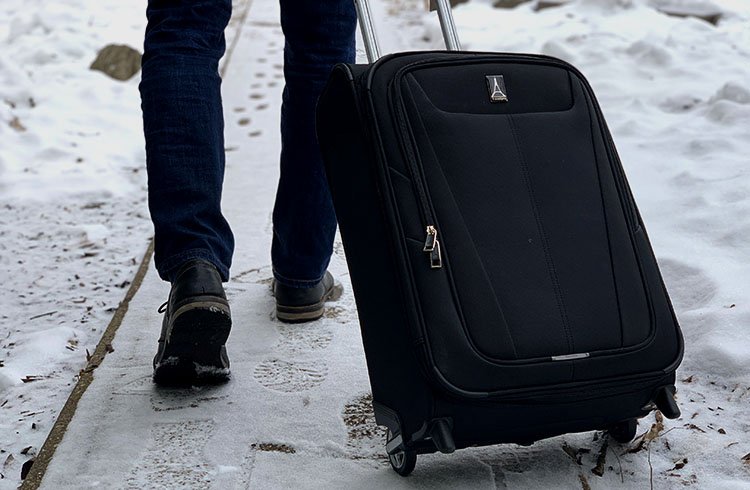Columbia, Mo. is growing, no question about it. Between the constant influx of new students at the University of Missouri, Stephens and Columbia Colleges, professors, business owners, scientists, journalists, artists and many other unique residents are adding to the population of Columbia.
The city saw a population boom from around 109,000 in 2010 to 121,000 in 2017. Throughout the area, the construction of new buildings is a common sight. But while the infrastructure in Columbia is improving to fit the needs of a larger city, about 12 miles to the south of Mizzou, the Columbia Regional Airport (COU) remains stagnant, but not in passenger numbers.
In 2017, 88,000 passengers departed out of COU with that number increasing to 100,790 as of May 2018. That’s a growth rate of 14.5 percent in less than a year. For comparison, in 2014, there were only around 42,300 departing passengers, which in total means that passenger numbers in the past four years have gone up by a staggering 138 percent. In order to compensate, two airlines now fly to Columbia, United, and American, with a total of three destinations, offered to COU passengers: Chicago O’Hare, Dallas-Fort Worth and Denver.
Any visitors to COU know the terminal building itself is about the size of a gas station, with little to no space to sit down and plan out one’s itinerary, or even just to put down carry on bags. The city of Columbia, however, insists that this is all about to change. In 2009, the “Terminal Area Master Plan” , an initiative to improve COU’s infrastructure including runways and a brand new terminal building and in 2015, the plan finally was approved. But construction never began and nearly 10 years since the conception of the master plan, bureaucratic inefficiency has held back the long-awaited new terminal and updated runways. The lack of the plan being put into action leaves Columbia passengers with little to no choice but to drive to St. Louis or Kansas City to catch their flights.
A factor which often deters passengers from traveling out of Columbia Regional Airport is the cost of flights. If a passenger wants to travel from Columbia to Chicago by plane, the ticket prices from COU will often be higher in price compared to flying from St. Louis or Kansas City. For example, a direct flight from COU to O’Hare on United costs $349 one way. Whereas flying from St. Louis to O’Hare on the same airline costs $249 one way. That’s a hundred dollar difference. American Airlines is no different, with a flight from Columbia to O’Hare also costs $349, and from St. Louis it’s also $249.
COU insists that if a passenger factors in parking, then that the cost of flying from the airport will change. But while Columbia Regional is offering free parking at the moment, that will likely change as the airport advisory board forks over more money to keep airlines around. In August of 2017, United Airlines had Columbia pay $600,000 in landing fees for their nonstop to Denver, Colo. Not only that, but the MoX shuttle service from Columbia to St. Louis and Kansas City airports means that passengers at those airports also won’t have to pay for parking, with the fare costing $50 one way. Which means that in the end, traveling to these other airports can be less expensive for Columbians.
Bottom line, Columbia Regional Airport will see more and more demand, but unless the city makes changes to the terminal, runways and prices, the issues of COU will force Columbia residents to continue driving two hours to other airports. Not to mention that with more use comes more wear and tear to the infrastructure. In June of last year, the city of Columbia approved another plan to build a new terminal and parking, but in reality, this likely won’t mean much in the grand scheme of things, as even the construction of the new terminal building will not proceed until the city obtains more money to finance the project.
To solve this issue, students who are eligible to vote should vote yes on policies which will increase funding for the project, or take part in community meetings with the Airport Advisory Board. The meetings are open to the public and encourage comments.
The next airport advisory board meeting is Wednesday, Jan. 23 at 3 p.m.















































































Karina • Feb 5, 2019 at 11:54 am
This was an interesting article to read. I didn’t know that the airport in Columbia charged more to go to Chicago than it did to go from St. Louis to Chicago. It’s still nice that Columbia has an airport however.